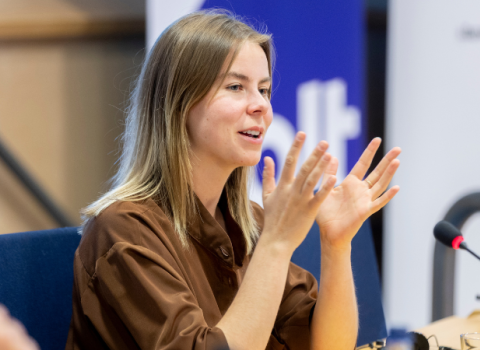A conversation with Jonathan Wareham, Professor at Esade Business School
The EU-funded ATTRACT project is experimenting with some new ideas in teaching entrepreneurship, bringing students from across Europe together with ‘deep tech’ from research infrastructures.

A conversation with Jonathan Wareham, Professor, Department of Operations, Innovation and Data Sciences, Esade Business School
Science|Business reporting
Here’s a tough problem to consider. As Europe strives to advance in global tech markets, where will it get the hot new talent, the young entrepreneurs to lead the charge?
The answer, one group of educators thinks, is to bring business, marketing and other students together, direct and hands-on, with new technologies – and give them a taste of real-world entrepreneurship. Their EU-funded research project is putting that notion to the test, bringing students from across Europe to big research infrastructures to touch and feel “deep tech” innovations – and help devise routes to market for them.
Entrepreneurship training isn’t about “just sitting in a marketing class and looking at a chalkboard, or looking at PowerPoint presentations,” says Jonathan Wareham, an ESADE Business School professor involved in the project. Instead, “it’s very much hands-on.”
The undertaking is called ATTRACT Academy, and so far it has brought more than 900 students to research infrastructures like the CERN particle-accelerator in Geneva or the European Synchrotron Radiation Facility (ESRF) in Grenoble. There, the students form small, multidisciplinary teams – pairing marketing with physics students, finance with biomedical students. They then work with professional researchers who have developed promising new innovations in detectors, sensors or related fields that the labs specialise in.
Art museums to shipyards
What the students come up with, days later, can be a new “use case” for the technology that the inventors may not have even considered. For instance, one student group took a new medical imaging system and reimagined it as a tool for art museums to examine and restore priceless old paintings. Another group devised a public-health campaign to apply a new tumour-detection tool to screen Bangladeshi shipyard workers for occupational lung cancer – a common affliction in that country’s ports, where old, asbestos-laden ships are often sent to be broken apart.
In these student groups, Wareham said in the podcast interview with Science|Business, “we have engineers, we have physicists, we have designers, we have social scientists, we have philosophers, we have marketing or business students, anthropologists. We really try and mix up the backgrounds of the students and get them engaged in working with these (tech) projects.”
The students learn about the technology, important for their future careers. But the project researchers also get new ideas on what their innovations could be used for, and how they might roll out a product or service – “real use cases, that they never thought about.”
The initiative addresses a real-world problem Europe faces: not enough tech talent to sustain its global marketplace ambitions. A recent McKinsey report estimates that by 2027 the EU will be short by 1.4 million to 3.9 million tech workers. And in those numbers, the shortage of entrepreneurial tech leaders is a special problem.
The great debate
In education circles, Wareham says, there’s an ongoing debate on how best to bridge that tech leadership gap.
“I work for a school of management, so I can publicly criticise a lot of what we do in terms of the way we teach entrepreneurship. It’s going for quick wins. It’s going for hyper-scalability. It’s going for exponential growth. It’s going for funding levels as the ultimate metric of success – you know, getting this funding package, Series A, Series B, getting rich.”
By contrast, he says, “a lot of these deep technologies almost require the exact opposite perspective. They take a long time to develop. They require patience. They require a deep understanding of the technologies and how they’re used with complementary technologies in the market. We try and sensitise students to this reality when we’re talking about the technology. It’s not a quick win. It’s not a an elevator pitch. It’s a far more holistic vision of production development.”
The Academy is about testing this pedagogical philosophy – with more than 900 students so far. It’s funded as part of the parent ATTRACT project, a two-phase, multi-year Horizon 2020 initiative led by CERN, and including ESADE, Aalto University, ESRF, the European Space Observatory, European XFEL, Institut Laue-Langevin, the European Molecular Biology Laboratory and the European Industrial Research Managers’ Association.
Sponsored by ATTRACT, an EU Horizon 2020 research ad innovation project, under grant agreement No. 101004462.




 A unique international forum for public research organisations and companies to connect their external engagement with strategic interests around their R&D system.
A unique international forum for public research organisations and companies to connect their external engagement with strategic interests around their R&D system.